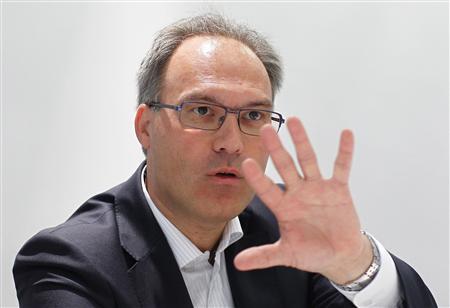Telecom network equipment vendor Ericsson today said it would split Networks business unit into two units — Radio and Cloud & IP business units – to enhance growth. Network business revenue dipped 13 percent in Q1 2014.
At present, networks business is the largest revenue earner for Ericsson.
Ericsson generated SEK 24.4 billion revenue from networks and SEK 20.4 billion from global services during Q1 2014.
The drop in network business was 13 percent in Q1 2014, while global services revenue decreased 5 percent. Ericsson is expecting margin and quality improvements. The operating margin of network business was 6 percent against global services’ 3 percent in the first quarter.
Also read: Ericsson Q1 2014 result: revenues dip 9%, faces tough second quarter
(In pix) Johan Wibergh, executive vice president, will assume new role as head of Segment Networks and remain a member of Ericsson’s Executive Leadership Team.
The change in organization will enable more focus on the needs of each business while maintaining an end-to-end view on the full networks operations.
Ericsson CEO Hans Vestberg has enough reasons for splitting the business.
Vestberg says the business logic and Ericsson’s relative position is different in the two areas. Radio is the foundation of Ericsson’s technology leadership.
Ericsson is the undisputed market leader, same size as number two and three together. It wants to maintain its leadership as the market evolves with 5G.
“In the cloud and IP space, which are vital for the evolution to 5G, we have made significant progress but are still a challenger. We will now intensify work to capture opportunities in virtualization and cloud, building on our leading position in core networks,” said Vestberg.
Michael Soper, networking & mobility analyst at Technology Business Research, earlier said that Ericsson’s gross and operating margins are benefitting from the shift in Capex spend from coverage to capacity among operators in mature markets.
The majority of LTE coverage projects in North America and Japan are post-peak, enabling operators to focus their attention on improving network capacity in high-traffic areas. Low-margin coverage projects are being replaced by high-margin network densification initiatives, driving down Ericsson’s revenue but expanding margins. In Q1 204, gross margin grew 450 basis points year-to-year to 36.5 percent.
Ericsson is also benefitting from its decision to accept lower margins on network modernization contracts in Europe in the 2010-2012 period, paving the way for modernization customers to select Ericsson for high-margin software upgrades and capacity enhancement business.
Baburajan K
[email protected]






